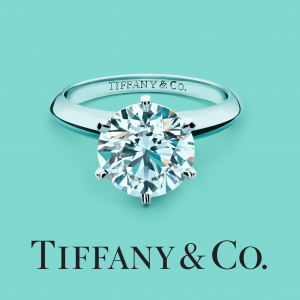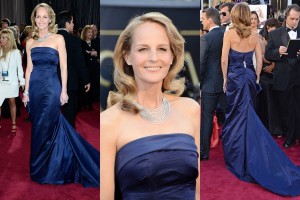Where are we headed?
Wouldn't it be great if we could look into a crystal ball and find those answers? How about the next best thing... ask Google. I am regularly researching trends and came across a interesting research paper written by the McKinsey Group - one of the top strategy consultancies in the world. The paper is titled "A multifaceted future: The jewelry industry in 2020".
The estimated annual global sales of jewellery (including fashion and precious) is around $220 billion Aussie. McKinsey predicts it should climb to $370A billion by 2020. The trend is that since the global recession, people’s appetite for jewellery has increased. What is abundantly clear and reiterated by McKinsey is the strength and growth of the branded product. Changing too are the channels by which branded products are getting to the market.
If you look at the larger Australian retailers such as David Jones and Myers, they were the centrepiece of fashion retail. However today we see international brand names such as Channel and Louis Vuitton. Years ago a customer would only ever know the name of their local jewellery retailer and maybe a chain store.

"Branded jewellery accounts for approximately 20% of the jewellery market world wide, which is double what it was from 10 years ago, furthermore the market share is expected to reach 30 to 40% by 2020."
Today its Tiffany’s, Cartier and standalone watch stores such as Tag which dominate the landscape in terms of consumer awareness. The big brands are getting bigger. An example of this (and a little known fact) is the Swatch group who has acquired the famous Harry Winston. There are very few Australian jewellery retailers who can truly claim to be a well-known brand locally and fewer still internationally.
It is generally accepted that branded jewellery accounts for approximately 20% of the jewellery market worldwide, which is double that of 10 years ago; furthermore the market share is expected to reach 30 to 40% by 2020.
Although we assume that the growth of branded jewellery is from familiar names as mentioned above, it’s predicted that more and more clothing brands are moving into the precious jewellery space such as Dior and Louis Vuitton. The McKinsey paper proposes (and something most of us know already) that the key to successfully compete with these big brands lies in differentiation and unique designs. Apparently large retailers are looking for up-and-coming designers to contribute to their collections. By engaging with a multitude of these creative designers - who may not be jewellers, but have a great artistic sense - and could use CAD to express their ideas is, perhaps, a way for a branded diamond to attract a new market segment.
The paper further confirms that 60% of luxury item shoppers look online before they make a store purchase and 30 to 60% look at social media for information and advice.
McKinsey suggests that although retailers may initially look to only offer their brands, they may well follow the path of becoming a multibrand boutique to enhance the shopping experience.
This concept was expounded by Dr Frank Mueller in his presentation at the WFDB Congress in Tel Aviv last year. Dr Mueller spoke of how large brands may well build a super web portal encompassing all the top brands. Consumers would gravitate to such a spot if nothing more than ease of use in terms of a fast searching functionality. The result of this however would be disastrous for many smaller players who don’t have the customer volume or strength of relationship to take on such giants.
There are clear parallels between high-end clothing fashion and jewellery.
Customers are moving to differing ends of the spectrum. Those who purchase jewellery from lower end chain stores are in fact paying less for items than they did a few years ago, as well as demanding bargain prices. The alternative is that more people are buying bigger diamonds for their engagement rings. But without a doubt the most interesting development is that more and more fine jewellery is being purchased by consumers for themselves and not specifically as a gift.

Helen Hunt modelling $700,000 worth of jewelry in a dress from H&M's conscious collection - essentially a few steps up from Target.
Another interesting trend is when fine jewellery, fashion jewellery and even low priced fashion is “mixed and matched” an example is Helen Hunt who wore $700,000 worth of jewellery with an H&M's conscious Exclusive Collection dress. (H&M are a few steps up from Target).
A central theme which I have communicated in numerous articles is that the diamond industry should not perceive itself to be immune to radical change. In another report by McKinsey - specifically on the diamond industry - they discuss a number of scenarios described as having potentially high impact shocks that could fundamentally change the industry if they happen.
- Consumer’s perception of the attractiveness of diamonds could change radically, which could easily occur again with a “blood diamond” type scenario.
- Should synthetic diamonds leak into the diamond chain without being correctly identified, there would be continued risk of undermining consumer confidence and trust. I personally am confident that although the tools to identify synthetics are only available in labs to date, this will change relatively quickly, and a small portable tool be available to be used in store.
If we focus our attention specifically on the diamond trade we see several trends shaping our industry.
The first is that the volume of diamond production will more than likely plateau over the next 10 years; the reason being that a number of mines will go off line or out of production. It should be noted that the last major diamond discovery was in 2004 and it takes years to bring in a mine online. Producing countries are doing everything they can to extract greater value from each of their mines, despite increasing mining costs.
The recycling of diamonds is becoming more prevalent and this will increase if there is greater financial distress in the markets. For those who are not aware of how big this market is check out the website www.whitepinediamonds.com. This is a very serious business internationally.
I put to you the following:
Ask yourself “what segment of the market am I targeting?” Be clear on this and focus on that segment. Is it the engagement ring market? Is it successful women wanting to buy themselves an item as a treat for having accomplished a goal?
Don’t try and be everything to everybody. What are you doing that is different?
Do you have a game plan for the future? How are you engaging with your existing customers to strengthen your relationships?
Having brands in your store can be a useful draw card, but how will you develop your own brand - albeit on a local or national level,or one day international level?
Last but by no means least “profit is not a dirty word”! Without it you will not have the resources to grow your business. From my perspective and that’s from someone who was guilty of it when I was in retail, “discounting is not the answer” to growing sales, it’s the throw away, and only hurts the business.
Trade well.